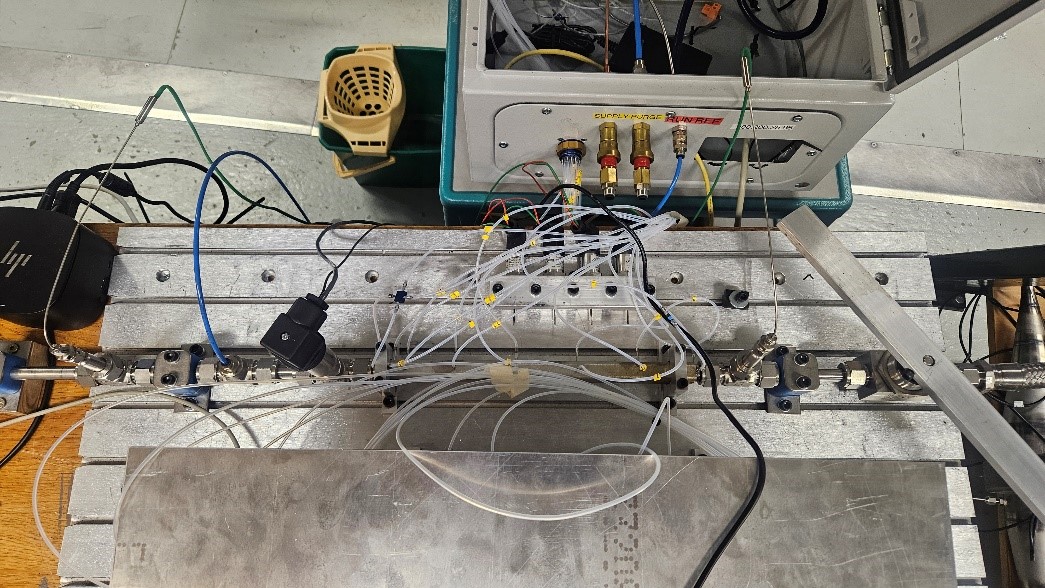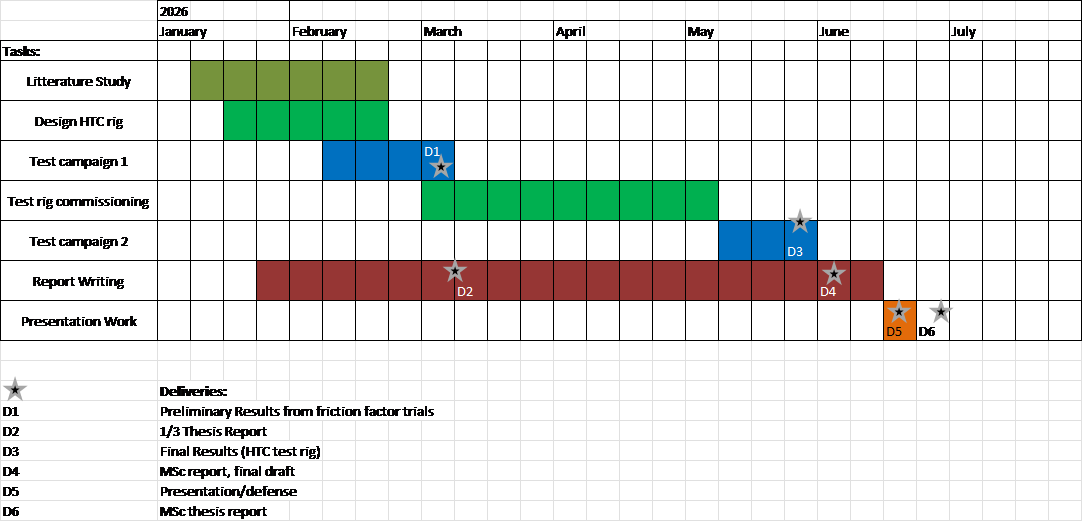Experimental study on heat transfer effects of AM printed cooling channels
Thesis Description
The advancements of additive manufacturing (AM) in metal alloys have been great during the last years. The benefits in terms of a minimum of material usage addressing material circularity, overall production cost savings and the increased degrees of freedom in possible new optimized designs, which in traditional production machining may be limited. Innovative designs may drastically advance the application as well, in terms of performance gain, especially when it comes to heat transfer. Cooling channels are widely applied in the turbomachinery field by cooling hot components and compact heat exchangers are composed of cooling channels, some that are highly three-dimensional in shape. The surface of an AM part is typically very stochastic with half-melted particles, and many times in an irregular pattern. Modelling of surface roughness and estimating the hydraulic diameter often results in a large uncertainty. Commonly used design correlations from literature are not valid anymore. Typically, you study non-dimensional parameters such as Darcy friction factor and Nusselt number (directly coupled to the heat transfer coefficient) over a range of Reynolds number. To do these studies experimentally, the EGI-HPT lab is running an existing cold flow rig where friction factors can be determined for a range of cooling channels with varying dimensions and surface roughness. To examine the Nusselt number a heat transfer rig is to be designed and constructed. The design and commissioning of such heat transfer rig is the bulk of the MSc thesis project. There is a conceptual design of such test rig to start from.

A literature study is followed by experimental friction measurements to get familiarized with the area. A design stage of the heat transfer rig will commence rather soon into the MSc thesis to allow for delivery of parts and time to assemble the test rig. As a final experimental campaign, there will be the commissioning of the heat transfer rig with cooling channels.
The thesis is conducted within an applied commissioned research project. Collaboration with industry is inherent, allowing participation in project meetings during the study. The student shall write a technical report (in English) and present/defend the findings at a public seminar at KTH.
Prerequisites
To be applicable, the student should have adequate knowledge of fluid mechanics (KTH course SG1220 or corresponding). Turbomachinery courses like MJ2523 have strong merits as well as heat transfer courses.
Time Plan
January 2026 – June 2026 (can be discussed)
Proposed Time Schedule

